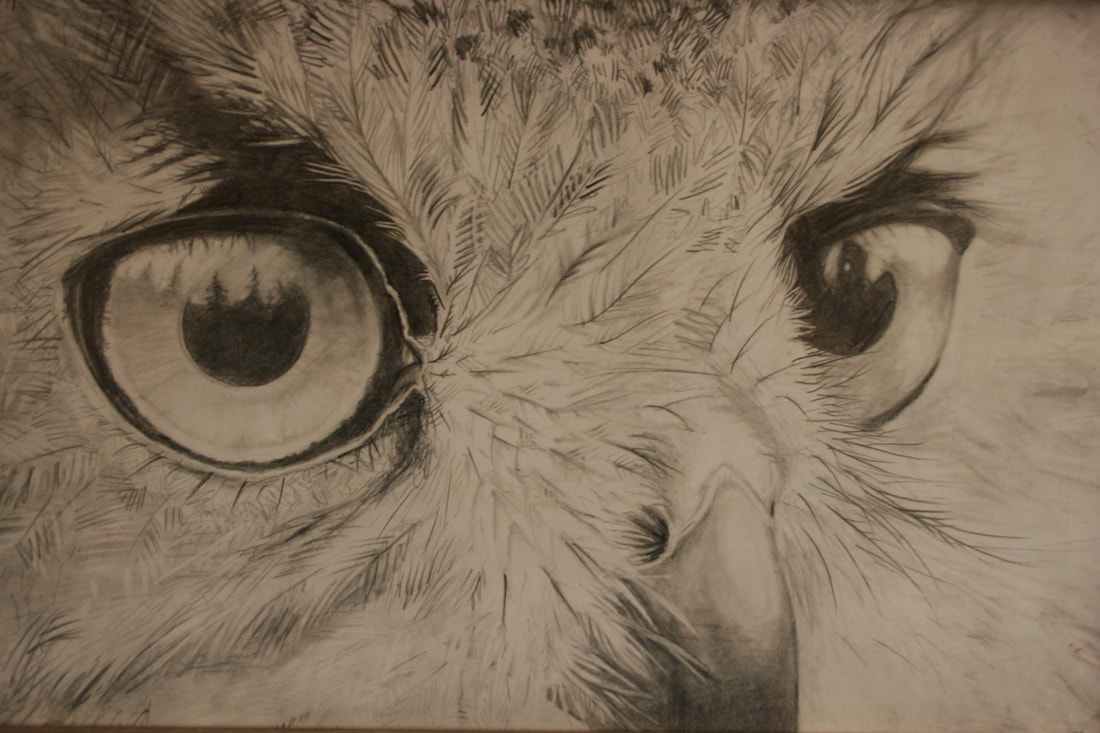|
By Janelle Eklund
'It's a blustery day, Winnie the Pooh!' That's what came to mind as I walked down the gravel road and the wind was singing a chorus through the trees. Dark aspen tree branches accented its leaves painted by autumn’s brilliant yellow, with splashes of red here and there. The wind whipped through the leaves releasing those weakened by age and frost. They sailed through the air in a fluttery rush until they reached the ground where the hands of the wind scooted them along like a mother hen hurrying her brood out of harm's way. Gathering speed they joined together and danced in circles, whirling and twirling, until they came to their final resting place where they will nourish the soil for next year. Those that settled on the road after a rain were pressed by passing cars. As their brilliance faded away their perfect imprint was imbedded like a fossil, making pretty leaf patterns on the road. Further north, above tree line, the tundra painted a different scene. Here the dominate colors of the paintbrush are intense reds and oranges undulating in a mosaic pattern across sweeping vistas spilling from white mountain peaks. Deep blue eyes of lakes reflected the celebration. Blueberry, dwarf birch and bearberry were the main instruments in this autumnal symphony. Splashes of yellow were played by small groups of willow, stunted aspen, or balsam poplar. As I lay on my tummy picking deep red cranberries and drinking in the pungent aroma of Labrador tea I caught a glimpse of purple out of the corner of my eye. The bonnet of this little tundra flower, Harebell, has the shape of a bluebell. This solitary flower sticks close to the ground, boosting a height of about 2" to 4". It's the little cymbal you see once in awhile in the grand symphony. A white stigma in the center of the flower unfolds into three sections, or lobes, ready to receive pollen. When the flower is just about ready to reach maturity it bends its little head toward the ground. This protects it from animals that might visit the flower but welcomes bees and wasps to enter, dine on its nectar, spend the night, and grab some pollen to carry elsewhere. Its bowed head also protects the pollen from rain. I usually see this hearty flower after all the other tundra flowers have run their course. Its creeping rhizomes helps it cling to gravelly tundra, alpine meadows and rocky outcrops. As folklore goes, in the Victorian language of flowers, they are said to symbolize gratitude and humility. I can understand that - gratitude for being so tough in a harsh climate and humility for its small solitary stature in a big landscape. From my light to yours- References: http://www.flora.dempstercountry.org; Wildflowers of the Yukon Alaska and Northwestern Canada, by John G. Trelawny
0 Comments
Leave a Reply. |
Who We AreWISEfriends are several writers connected with Wrangell Institute for Science and Environment, a nonprofit organization located in Alaska's Copper River Valley. Most of these articles originally appeared in our local newspaper, the Copper River Record. Archives
August 2021
Categories
All
|
|
WISE is a
501(c)3 nonprofit organization |
Contact Us |


 RSS Feed
RSS Feed
